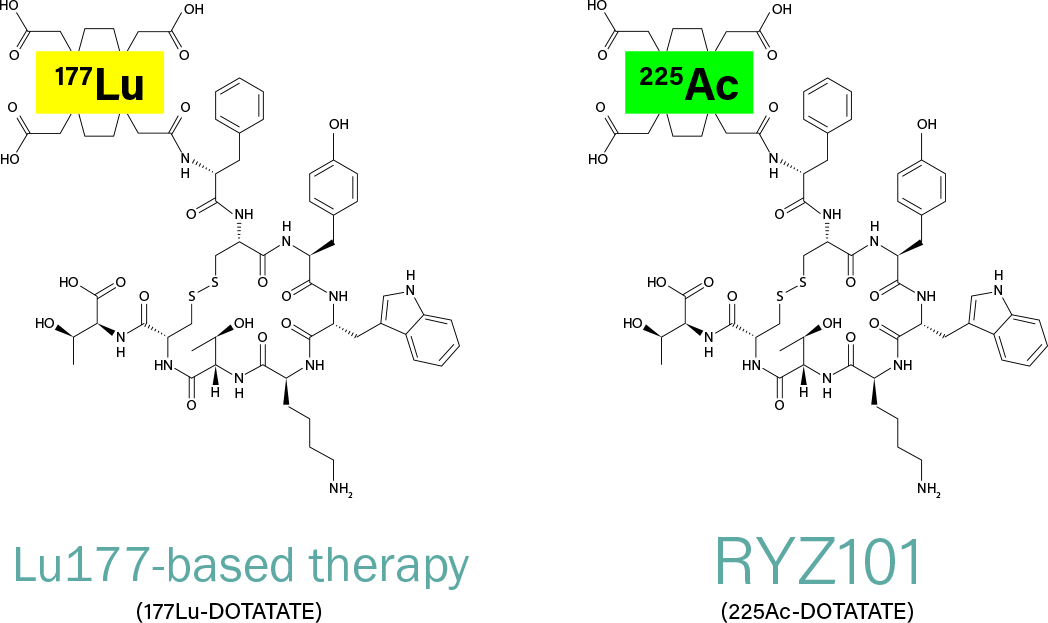RYZ101 for gastroenteropancreatic neuroendocrine tumors, or GEP-NETS
Gastroenteropancreatic neuroendocrine tumors, or GEP-NETs, are rare tumors with an incidence of approximately 18,000 patients annually in the United States. As many GEP-NETs follow an indolent disease course, the prevalence of GEP-NETs in the United States is approximately 200,000 patients. Somatostatin receptor type 2 (SSTR2) is expressed in 80-90% of GEP-NET tumors. Tumors can be aggressive and resistant to therapy, with metastatic disease present at diagnosis in 40-76% of cases. Radiopharmaceutical Therapy (RPT) comprising DOTATATE, a peptide somatostatin analog with DOTA chelator bound to Lutetium-177 (Lu177), a beta-emitting radioisotope, has shown significant clinical benefit and is approved for treatment of adult patients with SSTR+ GEP-NETs in Europe and the United States. While most patients experience initial disease control in clinical treatment with Lu177-based therapies, patients will invariably progress following treatment and most continue to live for at least two years without any approved treatments.
RYZ101 is our investigational, targeted RPT comprised of DOTATATE bound to Actinium-225 (Ac225), a highly potent alpha-emitting radioisotope. As compared to Lu177, Ac225, which emits a high-energy, shorter-range alpha particle results in more double-stranded DNA breaks in cancer cells, leading to cell death. This mechanism is less amenable to repair by the cell, thus reducing the potential for resistance. RYZ101 has been well tolerated in a Phase 1b trial that enrolled a total of 17 patients, all of which had been previously treated with Lu177 and then had disease progression. No dose limiting toxicity, or DLTs, were observed during the required 8-week DLT period in the first treatment cycle. Treatment has been well tolerated with no treatment related serious adverse events or dose discontinuations due to any adverse event.
We are currently enrolling patients in a Phase 3 global randomized clinical trial comparing RYZ101 against investigator’s choice of standard of care in a similar patient population.
We believe RYZ101 has the potential to be the first approved Ac225 RPT and could address the much needed treatment gap for patients with GEP-NETs who progress following Lu177-based therapies.
Details of the study can be found on here.


